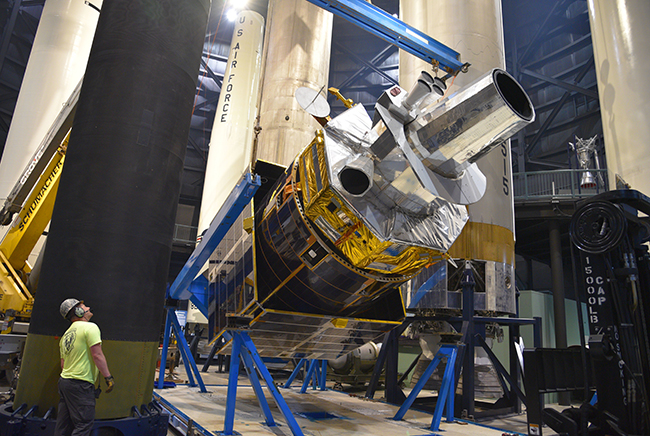Defense Support Program provides ballistic missile early warning and is a key part of North American and theater early warning systems.
It is capable of detecting missile launches and nuclear detonations and was initially meant to watch the Soviet military. It was used extensively in the 1991 Gulf War to detect Iraqi theater missile launches against coalition forces and allies in the region.
The 23rd and final DSP satellite launched in December 2007 but malfunctioned and began drifting outside its intended orbit in 2008.
Block 5 is the latest variant and is more survivable than predecessors. It includes a medium wavelength IR sensor for more mission utility and accommodates 6,000 detectors. Nine Block 5 satellites were deployed between 1989 and 2007.
Control of the constellation was consolidated to the new Block 10 Mission Control Station at Buckley in early 2016. SBIRS is integrated with DSP, augments its role, and is designed to eventually replace the constellation on orbit.
The constellations jointly enabled early detection of ballistic missiles launched by Iran against U.S. forces at Al Asad AB, Iraq, on Jan. 7, 2020, minimizing casualties.
Contractors: Northrop Grumman (formerly TRW); Aerojet
Operator/Location: USSF SpOC; Schriever SFB, Colo.
First Launch: November 1970.
IOC: Circa 1972.
Design Life: Three-year requirement and five-year goal.
Launch Vehicle: Titan IV with inertial upper stage; Delta IV Heavy NSSL.
Constellation: 23 deployed/five operational.
Active Satellites: •DSP-18. Launched in 1997, on orbit and operational. •DSP-19. Launched in 1999, on orbit and operational. •DSP-20. Launched in 2000, on orbit and operational. •DSP-21. Launched in 2001, on orbit and operational. •DSP-22. Launched in 2004, on orbit and operational. •DSP-23. Launched in 2007, on orbit and non-operational.
Dimensions: Diameter 22 ft, height 32.8 ft, with paddles deployed.
Weight: Approx 5,200 lbs.
Performance: Uses IR sensors to sense heat from missile and booster plumes against Earth’s background.
Orbit Altitude: Geosynchronous at 22,000+ miles.
Power: Solar arrays generating 1,485 watts.


